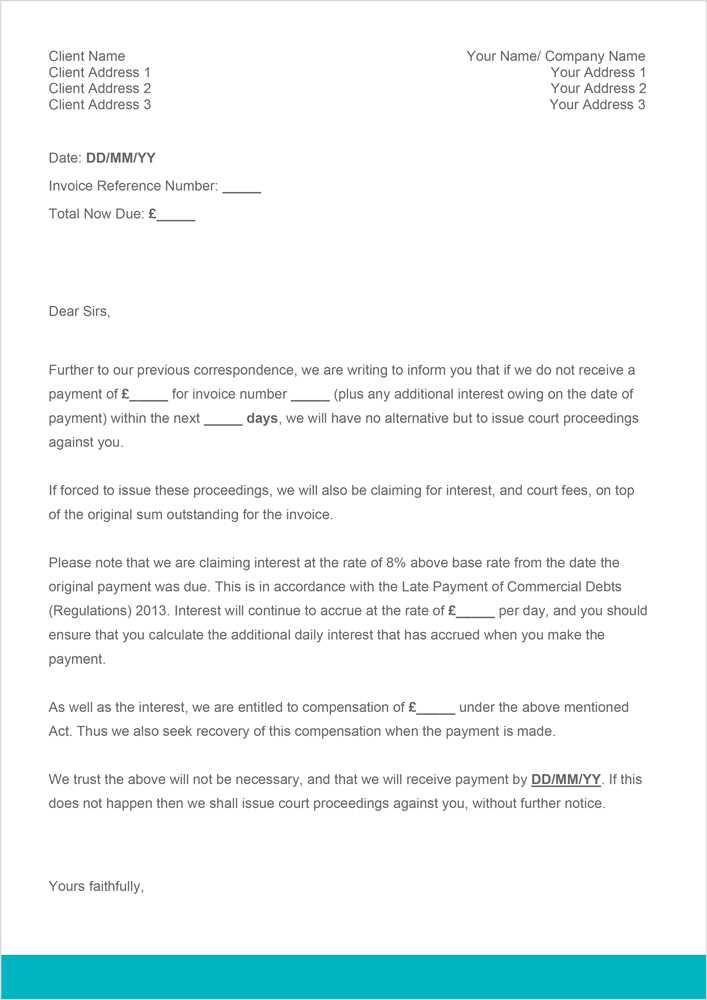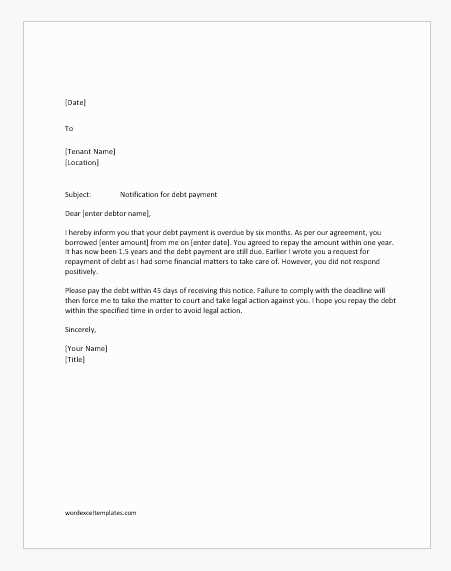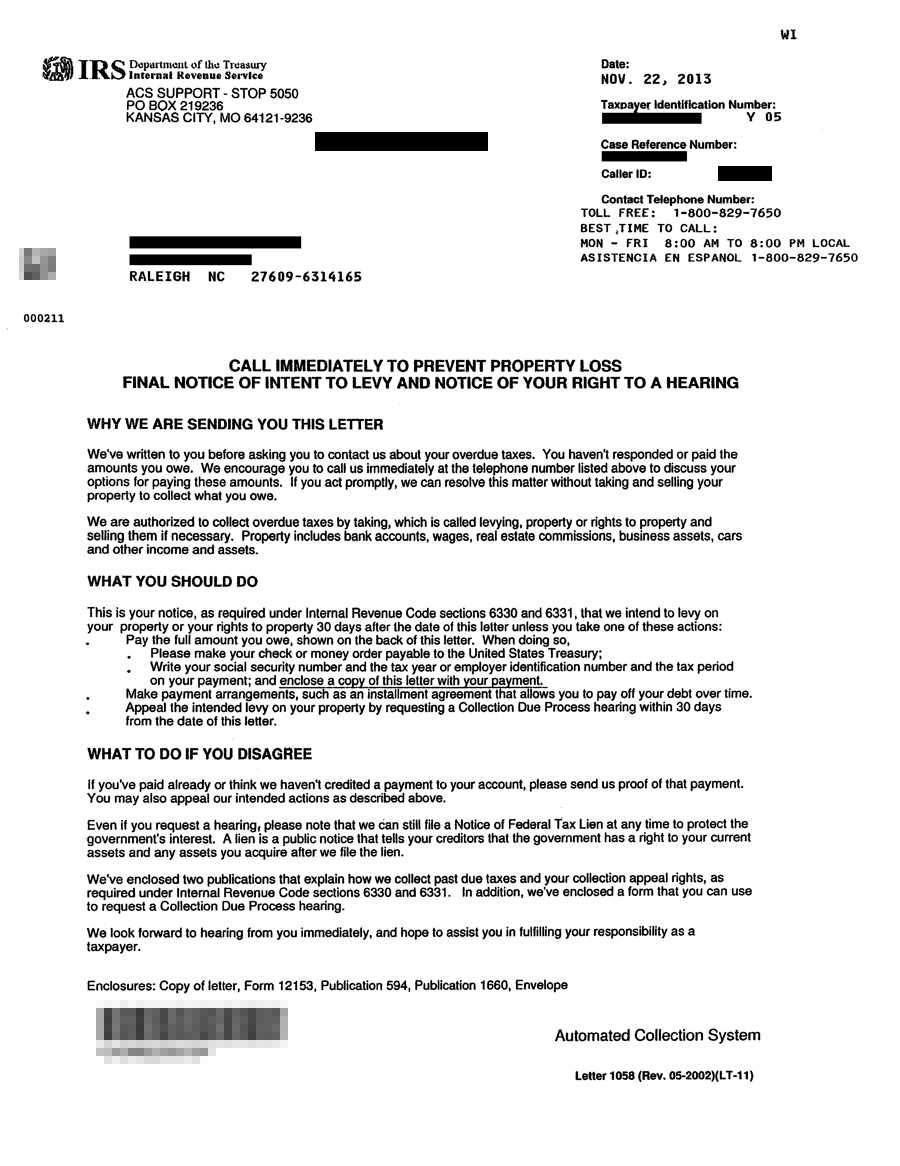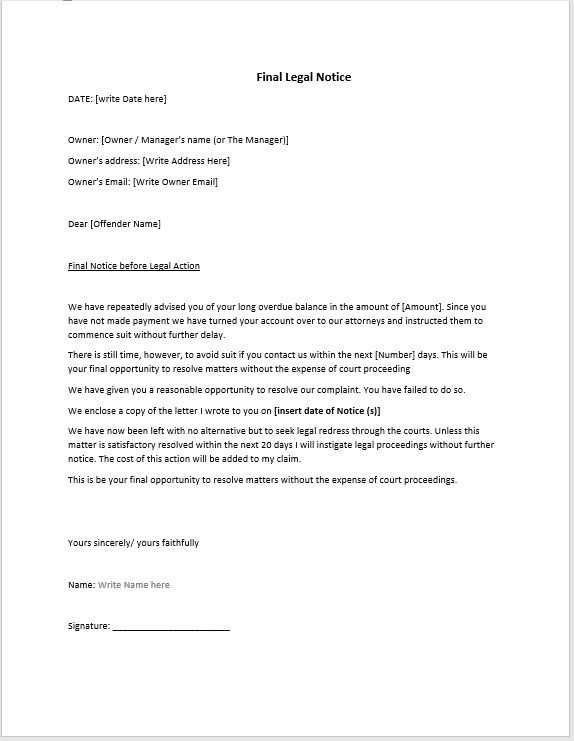Final Notice Before Legal Action Letter Template UK

When a business or individual faces the challenge of overdue payments or unresolved disputes, a formal communication may be necessary to prompt action. This document serves as a crucial part of the process, aiming to give the debtor one last opportunity to resolve the matter amicably, prior to further escalation.
Importance of Sending a Formal Warning
Issuing a formal communication is essential for several reasons. It highlights the seriousness of the situation and gives the recipient a clear understanding of the potential consequences. Without this step, it may be harder to justify further legal proceedings, as the recipient might argue they were not adequately informed.
Key Information to Include
A well-crafted document should cover several key elements to ensure clarity and legal standing. Here are the main points to consider:
- Recipient Details: Include the name, address, and other relevant contact information of the individual or company involved.
- Amount Due: Clearly state the outstanding balance, along with any interest or additional fees that may apply.
- Deadline: Provide a specific date by which payment or resolution is expected.
- Consequences: Outline the potential next steps, including legal action or other formal measures.
Customizing the Communication for Your Needs
Each situation is unique, and it is important to tailor the content to fit your specific circumstances. Consider the relationship with the debtor, the nature of the dispute, and the desired outcome. Personalizing the message can help convey professionalism and urgency while avoiding unnecessary confrontation.
When to Move Forward with Further Measures
If no response is received by the specified deadline, it may be time to take further steps. This could involve engaging with a collections agency or initiating a claim through the courts. Having a formal warning on file can strengthen your case, showing that you attempted to resolve the issue without resorting to legal means.
Common Mistakes to Avoid
There are several common errors that individuals and businesses should avoid when creating this document:
- Unclear Language: Ensure the message is straightforward and easily understood, avoiding ambiguous terms.
- Failing to Include Key Details: Missing important information, such as the due amount or specific deadlines, can make the document ineffective.
- Overly Aggressive Tone: A professional and respectful tone is essential, even if you are frustrated by the situation.
Understanding the Final Reminder and Its Importance
When a situation arises where payment or resolution is pending, it is often necessary to send a formal communication. This document serves as the last attempt to resolve the issue amicably before resorting to more serious measures. It acts as a warning, setting clear expectations and outlining the consequences of continued non-compliance.
Sending such a communication is crucial as it demonstrates a business’s commitment to resolving the matter without escalating to formal proceedings. It not only serves as a reminder but also provides the recipient an opportunity to settle the dispute without the need for further action.
Essential Components to Include
To ensure the message is effective, certain details must be included. These may cover the outstanding balance, any additional charges, a clear deadline for resolution, and potential consequences if no response is received. A precise, professional tone should be maintained throughout to ensure the recipient fully understands the seriousness of the situation.
Customizing the Communication for Specific Circumstances
Each case differs, and it is important to personalize the message to fit the unique circumstances of the situation. Factors such as the nature of the dispute, the relationship with the debtor, and the desired outcome should all influence the content. A well-tailored message is more likely to prompt action and avoid unnecessary conflict.
Consequences of Ignoring the Communication

Failure to respond to the formal communication can lead to more severe consequences. Not only does it delay the resolution, but it may also strengthen the case for further legal measures, including court proceedings or engagement with a collections agency. Ignoring such a warning could leave the debtor in a more vulnerable position, with higher costs and potential legal action looming.
Avoiding Common Pitfalls

There are several common mistakes to avoid when drafting this kind of communication. These include using unclear language, failing to provide necessary details, or adopting an overly aggressive tone. To avoid these errors, it is essential to ensure the message is concise, precise, and respectful, clearly stating the consequences without provoking unnecessary tension.
When to Take Further Steps

If there is no resolution by the deadline stated in the communication, it may be time to proceed with formal legal measures. At this point, pursuing a claim through the courts or working with a collections agency can help recover the outstanding funds or resolve the dispute. Having already sent a formal communication strengthens your position and provides evidence of your attempt to resolve the matter amicably.